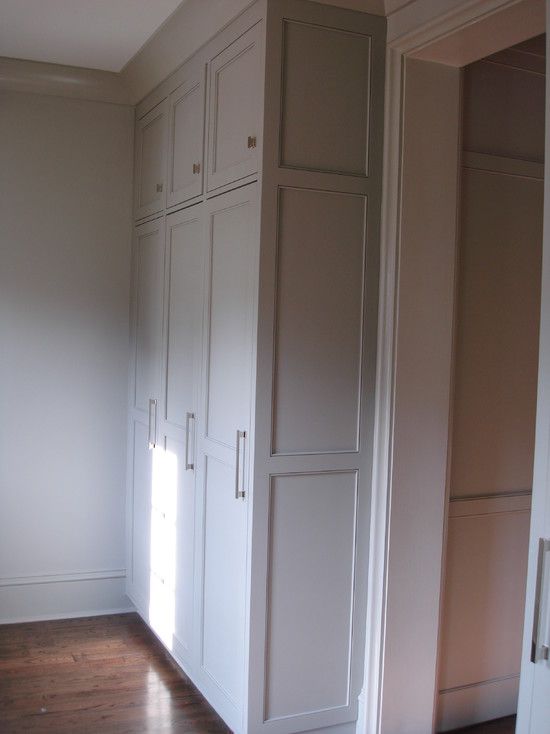How Many Coats of Polyurethane on Floors
The number of coats of polyurethane you’ll need on your floors depends on the type of finish you’re using, how much foot traffic your floors get, and your personal preference. If you’re using a water-based polyurethane, you’ll need at least two coats. For oil-based polyurethanes, three to four coats are recommended.
If you have light foot traffic in your home, two coats should be sufficient. However, if you have heavy foot traffic or pets, you may want to consider adding an additional coat for extra protection.
When it comes to polyurethane, more is not always better. In fact, when it comes to floors, too many coats of poly can actually do more harm than good.
While polyurethane does add a nice layer of protection to floors, it can also make them very slippery.
And if you have too many coats on your floor, the finish can start to look cloudy and dull.
So how many coats of poly should you use on your floors? The general rule of thumb is two to three coats for light traffic areas and three to four coats for high traffic areas.
But ultimately, it all depends on the condition of your floor and your personal preference.
2 Vs. 3 Coats of Polyurethane
There are a few things to consider when deciding how many coats of polyurethane to apply. The type of wood, the environment, and the look you’re going for all play a role.
Generally speaking, most woods will benefit from at least two coats of polyurethane.
This provides adequate protection from moisture and wear-and-tear. However, some woods – especially those that are more porous – may require an additional coat for maximum protection.
If you’re worried about your project getting damaged by kids or pets, it’s worth err on the side of caution and go for three coats.
This will create a harder, more durable surface that can withstand a fair amount of abuse.
Finally, if you want a high-gloss finish, you’ll need to apply at least three coats of polyurethane. Anything less will result in a duller sheen.
2 Or 3 Coats of Oil-Based Polyurethane on Floors
Oil-based polyurethane is a durable finish that can be applied to floors in multiple coats for added protection. The number of coats you apply will depend on the level of traffic in your home and the amount of wear and tear you expect your floors to see.
If you have light traffic in your home, two coats of oil-based polyurethane should be sufficient.
If you have heavy traffic or pets, you may want to consider three coats. Applying multiple thin coats is better than one thick coat, as it will provide better coverage and protection.
When applying oil-based polyurethane, be sure to use adequate ventilation and wear a respirator to avoid inhaling fumes.
You’ll also need to allow plenty of time for each coat to dry completely before walking on it or adding furniture back into the room.
How Many Coats Water-Based Polyurethane
Water-based polyurethane is a type of clear coat that is typically used on wood surfaces. It is made up of two main ingredients: water and polyurethane. This type of clear coat is applied in thin coats with a brush or roller, and it dries quickly.
After the first coat dries, you can apply additional coats until you achieve the desired level of protection and shine.
Hardwood Floor Refinishing 2 Or 3 Coats
Hardwood floor refinishing is a process by which the top layer of wood is removed in order to expose a new layer of wood beneath. This process can be done 2 or 3 coats deep, depending on the desired look. The first coat is typically the lightest in color, while the second and third coats get progressively darker.
Once all three coats are applied, the floors are then sealed and protected with a clear finish.
How Many Coats of Polyurethane on Stairs
If you’re wondering how many coats of polyurethane to apply on your stairs, the answer depends on a few factors. First, if you are using an oil-based polyurethane, you will need at least three coats for durability and protection. Water-based polyurethanes only require two coats.
Second, if your stairs see a lot of traffic, you may want to consider four coats of either type of polyurethane. This will provide extra protection against wear and tear. Third, the color of the stain or paint underneath the polyurethane can also affect how many coats you need.
If the color is light, you may only need one or two coats of clear polyurethane. However, if the color is dark, you’ll probably need three or four coats to prevent it from showing through.

Credit: www.youtube.com
Is 2 Coats of Polyurethane Enough for Floors?
It is a common misconception that two coats of polyurethane are enough for floors. While two coats may provide some protection, it is not enough to withstand the wear and tear of daily life. Floors need at least three coats of polyurethane to stand up to traffic and maintain their finish.
Do You Have to Sand between Coats of Polyurethane on Floors?
Polyurethane is a popular finish for hardwood floors because it is durable and easy to clean. However, applying polyurethane can be a bit tricky. One of the most important steps in applying polyurethane is sanding between coats.
Sanding between coats of polyurethane helps to create a smooth, even surface. It also helps to remove any dust or debris that may have been left behind after the previous coat was applied. Without sanding, these imperfections can show through the finished floor.
So, how do you sand between coats of polyurethane? The best way to sand between coats is with a palm sander using fine-grit sandpaper (around 220 grit). Start by lightly sanding the entire floor with the palm sander.
Then, focus on any areas that seem rough or uneven.
After you’ve finished sanding, vacuum up all the dust and debris. Then, wipe down the floor with a damp cloth to remove any remaining dust particles.
Once the floor is clean and dry, you’re ready to apply the next coat of polyurethane!
Is 4 Coats of Polyurethane Too Much?
Whether or not four coats of polyurethane is too much depends on a few factors. The first is the type of wood you’re working with. Softer woods, like pine, may only need two or three coats for full protection.
Harder woods, like oak, might need all four coats to seal in the grain and prevent wear and tear.
Another factor to consider is the finish you’re going for. If you want a high-gloss look, four coats might be necessary to achieve that level of shine.
On the other hand, if you’re aiming for a more natural look, three coats might suffice.
Ultimately, it’s up to you to decide how many coats of polyurethane your project needs. If you’re unsure, start with two or three and go from there.
How Many Coats of Finish Do You Put on Hardwood Floors?
When it comes to hardwood floors, there is no one-size-fits-all answer to the question of how many coats of finish to apply. The number of coats will depend on a variety of factors, including the type of wood, the desired level of protection, and the environment in which the floor will be used.
For example, if you are installing hardwood floors in a high traffic area, you may want to consider applying more than one coat of finish.
This will help to protect your floors from scratches and scuffs. Likewise, if you are putting hardwood floors in an area that is prone to moisture or humidity, you may also want to consider applying additional coats of finish. This will help to prevent your floors from warping or buckling over time.
Ultimately, the decision of how many coats of finish to apply should be based on your specific needs and preferences. If you are unsure about how many coats to use, consult with a professional flooring installer or finishing specialist. They will be able to assess your situation and recommend the best course of action for protecting your hardwood floors.
Hardwood Floor. 2nd coat of polyurethane.
Conclusion
If you’re wondering how many coats of polyurethane to put on your floors, the answer depends on a few factors. The type of flooring, the condition of the floor, and the look you’re going for will all affect how many coats you need. Generally speaking, three coats is a good starting point, but you may need more or less depending on your specific situation.






